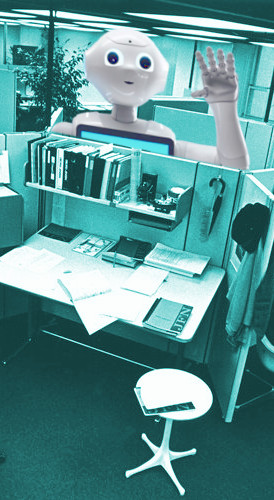Robot loafing tested
 Experts are investigating whether robot helpers make humans lazier.
Experts are investigating whether robot helpers make humans lazier.
When humans collaborate with robots, they may become less attentive to their tasks, a phenomenon known as ‘social loafing’, according to research conducted at the Technical University of Berlin.
The study examined whether humans working alongside robots experienced a decline in their work engagement, and the findings have implications for industries increasingly integrating robots into their processes.
As technology advances, the integration of robots into various industries prompts a fascinating question: do humans view these robots as teammates, and if so, does this have an impact on their work habits?
Researchers at the Technical University of Berlin set out to explore the concept of ‘social loafing’ in teams comprising humans and robots.
Dietlind Helene Cymek, the first author of the study published in Frontiers in Robotics and AI, says: “Teamwork is a mixed blessing. Working together can motivate people to perform well, but it can also lead to a loss of motivation because the individual contribution is not as visible. We were interested in whether we could also find such motivational effects when the team partner is a robot.”
To investigate this, scientists designed a simulated industrial defect-inspection task where participants were tasked with identifying errors on circuit boards.
Half of the 42 participants were informed that a robot named Panda had previously inspected the circuit boards, though they did not directly collaborate with Panda.
While analysing the boards and marking defects, all participants self-evaluated their effort, sense of responsibility for the task, and performance.
Initially, there appeared to be no significant difference between the two groups in terms of time spent inspecting the circuit boards, the area covered, or their self-assessment of effort and performance.
However, a deeper analysis revealed a crucial distinction: those working alongside Panda identified fewer defects as the task progressed, particularly after observing Panda's successful error identifications.
This behaviour suggests a “looking but not seeing” effect, where participants unconsciously relied on Panda and engaged with the task less mentally.
Dr Linda Onnasch, the senior author of the study, said: “It is easy to track where a person is looking, but much harder to tell whether that visual information is being sufficiently processed at a mental level.”
The implications of this phenomenon extend to safety concerns in industries where robots are increasingly prevalent, such as manufacturing and quality assurance.
The authors cautioned that in longer shifts, routine tasks, and environments with minimal performance monitoring, the loss of motivation could have a more significant impact on work outcomes, potentially compromising safety, especially in areas where double-checking is common.
It is worth noting that the study has its limitations.
Participants did not work directly with Panda, and the controlled laboratory setting may not fully capture the dynamics of real-world human-robot interaction.
For a more comprehensive understanding, future research should extend to real work environments where skilled workers routinely collaborate with robots.








 Print
Print